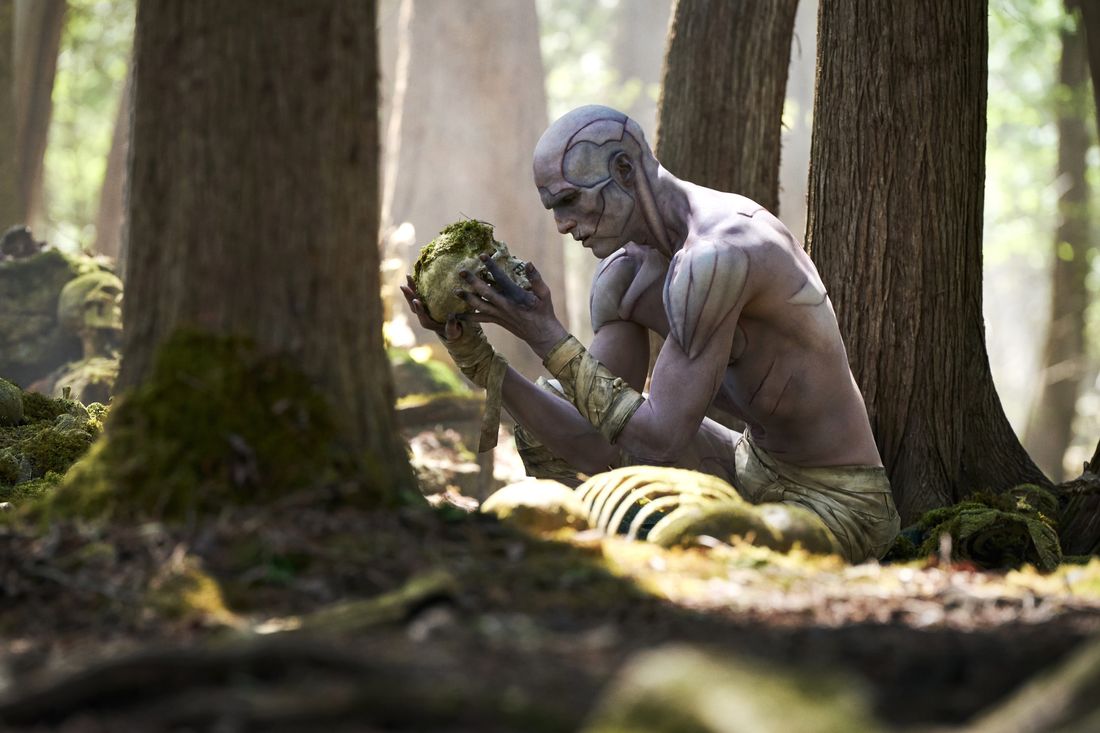
Spoilers follow for Guillermo del Toro’s adaptation of Frankenstein.
Guillermo del Toro has a knack for making the monsters in his movies incredibly attractive. Think of the charming vampire in Cronos, the stunning Luke Goss in Blade II and Hellboy II, or the impressively sculpted Amphibian Man from The Shape of Water. Del Toro’s films challenge us to look beyond appearances and appreciate the qualities of others. So it’s no surprise that the Creature in his Frankenstein is a tall, muscular, and strikingly handsome figure. While Jacob Elordi endured hours of prosthetic makeup, the prosthetics didn’t hide his attractiveness. This isn’t necessarily a bad thing on its own, but Frankenstein also refuses to give its Creature any flaws – either physical or moral – instead presenting him as simply another attractive, misunderstood character.
The new Netflix film takes a surprising turn with its version of Frankenstein’s Creature. Unlike Mary Shelley’s original novel, where the Creature ends his life after Victor Frankenstein’s death, this film gives him a hopeful future. In the book, the Creature, filled with regret, chooses death as his only solace, leaping into the Arctic waves. The film follows a similar setup with the Creature and Frankenstein chasing each other to the icy north, but instead of death, they find reconciliation. The Creature forgives his creator, and Frankenstein offers him love in return. This newfound acceptance leads the Creature to believe he can finally experience humanity. The film concludes with a touching scene of the Creature removing his hood, basking in the sun, and embracing life. He even demonstrates an apparent ability to heal from injuries, hinting at possible immortality. While visually appealing, this happy ending significantly simplifies the complex and tragic character from the original story.
As a movie lover, I always find the ending of Frankenstein so haunting. It really drives home how arrogant we humans are when we try to play God. Frankenstein creates this Creature, but then abandons him, leaving him utterly alone and miserable. And the Creature, understandably, retaliates, taking the lives of William and Elizabeth. It’s like they’re two sides of the same coin, both obsessed with life, but ultimately disrespecting it. Frankenstein made the Creature, so really, any harm the Creature does is ultimately Frankenstein’s responsibility too. It makes you wonder if either of them deserves forgiveness. And if they could forgive each other, but can’t forgive themselves, does dying finally offer them some kind of peace?
Guillermo del Toro’s adaptation of Frankenstein reimagines the relationship between Victor Frankenstein and his Creature as one of abuse and neglect, portraying the Creature as a perpetually vulnerable, childlike figure. This differs significantly from Mary Shelley’s novel, where the Creature is a more complex character capable of both kindness and vengeful acts. In the film, Elizabeth’s death is Frankenstein’s doing, and the death of William is an accident during Frankenstein’s attempt to frame the Creature – a point emphasized by William’s dying words, revealing Frankenstein as the true monster. Del Toro presents the Creature as a tragic figure, like Edward Scissorhands, desperately seeking love and finding it in Elizabeth. This interpretation leans heavily into del Toro’s idea that everyone carries monstrous qualities, reducing the Creature to simply being “wronged.” Shelley’s novel explores the Creature’s internal conflict – his simultaneous hatred of existence and belief that Frankenstein owes him a companion, alongside his contradictory actions. The film largely removes this complexity, instead focusing on the Creature’s innocence and desire for protection. The film also omits the story of Frankenstein’s attempt to create a mate for the Creature. While del Toro aims to highlight the contrast between Frankenstein’s ambition and the Creature’s inherent goodness, by stripping away the Creature’s flaws and complexities, the film ultimately weakens the story’s central themes.
The film places the blame for Elizabeth’s death on the Creature, despite Frankenstein being responsible. The Creature’s response – breaking Frankenstein’s nose and a strangely flirtatious claim of dominance – feels surprisingly mild, creating an imbalance in their relationship. This lack of intense, mutual resentment weakens their final confrontation and leaves the audience wondering what truly drives them towards their tragic end. The film relies on dramatic music and close-ups to create a sense of sorrow, but these efforts feel unearned. While moments like Frankenstein urging the Creature to live and the Creature calling him “Father” touch on themes of family, they don’t align with the core message of Mary Shelley’s Frankenstein. The story isn’t about forgiveness; the film loses sight of Shelley’s warning about the dangers of unchecked ambition. Director del Toro shows considerable sympathy for the Creature, giving him a hopeful ending and a chance at a new life, a moment highlighted by Elordi’s subtle performance. However, this ultimately feels unsatisfying, as it overlooks the Creature’s deep suffering. Del Toro is known for making difficult choices and letting characters meet tragic ends, but here, choosing to spare the Creature feels predictable and misses the mark.
Read More
- ETH PREDICTION. ETH cryptocurrency
- Cantarella: Dominion of Qualia launches for PC via Steam in 2026
- Gold Rate Forecast
- AI VTuber Neuro-Sama Just Obliterated Her Own Massive Twitch World Record
- Jynxzi’s R9 Haircut: The Bet That Broke the Internet
- Ripple’s New Partner: A Game Changer or Just Another Crypto Fad?
- They Nest (2000) Movie Review
- Apple TV’s Foundation Is Saving Science Fiction
- Super Animal Royale: All Mole Transportation Network Locations Guide
- Top 3 Must-Watch Netflix Shows This Weekend: December 19–21, 2025
2025-11-14 23:54